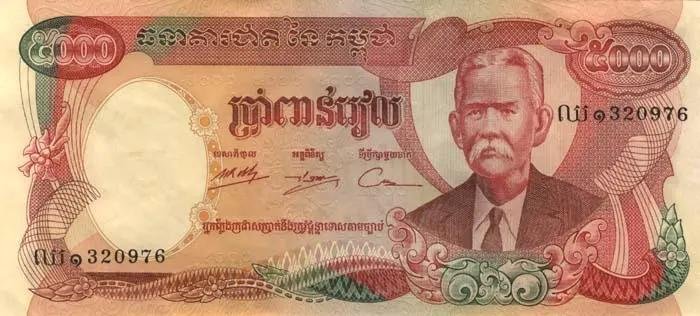Chronicles of Cambodian Currency: A Historical Odyssey of Cambodia Banknotes

The Evolution of Cambodian Banknotes
Step into the fascinating world of Cambodian currency as we embark on a historical odyssey of Cambodia banknotes. From its humble beginnings to the intricate designs of today, each banknote tells a unique story of the nation’s rich heritage and cultural significance.
1. The Early Years
In the early 20th century, Cambodia’s currency was heavily influenced by neighboring countries. French Indochinese banknotes circulated widely, with Cambodian banknotes being introduced in 1955. These initial banknotes featured traditional Khmer motifs, such as temples and mythical creatures, reflecting the country’s deep-rooted cultural heritage.
2. The Reign of King Norodom Sihanouk
During the reign of King Norodom Sihanouk, Cambodia witnessed a significant shift in its currency design. In the 1960s, banknotes were adorned with portraits of the King himself, showcasing his influence and importance in the nation’s history. These banknotes also highlighted Cambodia’s agricultural and industrial sectors, symbolizing the country’s economic progress.
3. The Khmer Rouge Era
The Khmer Rouge regime, which lasted from 1975 to 1979, marked a dark period in Cambodia’s history. During this time, the country’s currency became obsolete, as the Khmer Rouge abolished money and implemented a barter system instead. Banknotes from this era are rare and serve as a somber reminder of the atrocities committed during that time.
4. The Post-Khmer Rouge Era
After the fall of the Khmer Rouge, Cambodia embarked on a journey of recovery and rebuilding. In 1980, a new series of banknotes was introduced, featuring iconic landmarks like Angkor Wat and the Royal Palace. These banknotes aimed to revive national pride and showcase Cambodia’s cultural treasures to the world.
5. Modern Designs and Security Features
In recent years, Cambodia has embraced modern designs and advanced security features in its banknotes. The current series, introduced in 2015, showcases vibrant colors, intricate patterns, and the use of advanced printing technologies. These banknotes not only reflect Cambodia’s progress but also enhance security to prevent counterfeiting.
The Cultural Significance of Cambodia Banknotes
Cambodia banknotes not only serve as a medium of exchange but also carry immense cultural significance. The intricate designs and motifs featured on the banknotes pay homage to the country’s rich history, art, and architecture.
For example, the depiction of Angkor Wat, a UNESCO World Heritage Site, on the banknotes symbolizes Cambodia’s ancient civilization and architectural marvels. The inclusion of traditional dance forms, such as the Apsara dance, showcases the nation’s vibrant cultural heritage.
Furthermore, the use of Khmer script on the banknotes reinforces the importance of preserving the Cambodian language and script, which have deep historical roots.
The Future of Cambodia Banknotes
As Cambodia continues to develop and evolve, its banknotes will likely reflect the changing landscape of the nation. With advancements in technology and design, future banknotes may incorporate even more intricate security features and innovative elements.
However, it is crucial to strike a balance between modernity and preserving the country’s cultural identity. Cambodia’s banknotes will always be a testament to its rich history and cultural heritage, serving as a reminder of the nation’s resilience and progress.
In Conclusion
The journey through the chronicles of Cambodian currency takes us on a captivating odyssey, unveiling the nation’s historical, cultural, and economic milestones. From the early years to the present day, each banknote carries a piece of Cambodia’s story, making them not just a means of transaction but also a reflection of the nation’s identity.
So, the next time you hold a Cambodian banknote in your hands, take a moment to appreciate the intricate designs and the stories they tell, for they are a testament to the vibrant history and cultural heritage of Cambodia.

